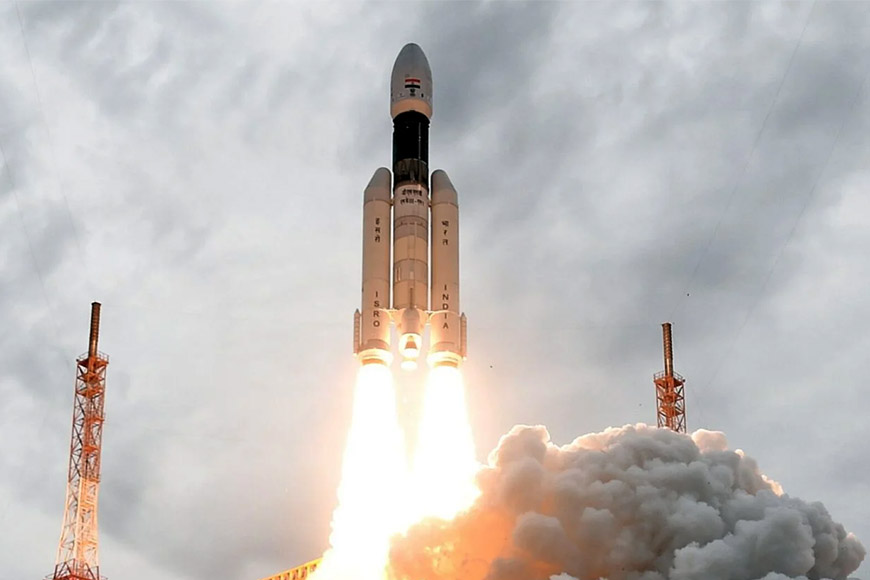Jadavpur University scientists, part of ISRO’s Chandrayaan 3

On 6th September 2019, ISRO (Indian Space Research Organisation) launched Chandrayaan 2 for lunar exploration. Chandrayaan 2 is inscribed in the memories of every Indian, as everyone had high hopes though the landing did not go as planned. It consisted of mainly three things- Orbiter, Lander (Vikram), and Rover. Unfortunately, moments before its landing, all connection with Vikram was lost, and contact could not be restored anymore. Even though the Orbiter was sending radio signals, no information on Vikram was received. At first, the speed was under control. The problem started as the lander during its landing phase, deviated from its intended trajectory starting at 2.1 km altitude. K Sivan, ISRO Chairman, said that it must have been a hard landing. The speed of the lander exceeded to initiate a soft landing, as a result of which it drifted at least 500 meters away from the targeted landing spot. The cause of the crash was later concluded to be due to a software glitch, according to the Failure Analysis Committee (though it was not made public). The primary objectives of the Chandrayaan-2 lander were to demonstrate the ability to soft land and operate a robotic rover on the lunar surface. Though the landing was not successful the orbiter is successfully orbiting the moon on a polar orbit at an altitude of 100 km.
All the mistakes made in the second Chandrayaan attempt are to be revised and taken care of in the third Chandrayaan attempt. K Sivan, ISRO Chairman, has stated that Chandrayaan 3 will land as softly as a feather. The Chandrayaan 3 is in the making and is scheduled to launch in June 2023. Jadavpur University is collaborating with ISRO in its third lunar exploration attempt. After the bitter landing experience in the second Chandrayaan attempt, the responsibility of making the model of the lander and achieving a soft landing has been taken over by a JU team under Prof. Amitava Gupta of the University’s Power Engineering Department and Sayan Chattopadhyay, teacher of the University’s Electronics and Telecommunications Department. Sources on anonymity said they have already started working on the project. GB tried to contact Amitava Gupta for further information on this issue, but he did not respond as the project is ongoing and since it handles extremely sensitive scientific data, much could not be shared.
However, Chandrayaan 3 will have the same objectives as Chandrayaan 2. Only this time it will consist of only a lander and a rover. It will not have an orbiter, but its propulsion module will behave like a communications relay satellite. Chandrayaan 2 is intended to land on the lunar south pole, and Chandrayaan 3 too is also set to land on the lunar south pole. This is exactly where the lander, Vikram, crashed and no traces of him were found. It is speculated that the Chandrayaan 3 will throw some light on the uncertainty behind Vikram’s unsuccessful landing.
Jadavpur University’s researchers are examining every possible way so that the lander can softly land on the surface of the moon. This time there are supposed to be 13 thrusters which will facilitate a softer landing. The weight of the spacecraft with the fuel is going to be approximately 2500 kgs, whereas the weight of the spacecraft without the fuel will be approximately around 500 kgs. The spacecraft will also have a camera to monitor its movements. Precautions are being taken in such a way that communication still stays intact, even if the lander deviates from its targeted landing position. Chandrayaan 2 had 4 thrusters, and the thruster at the center had the main role to play in making a successful soft landing by gradually decreasing the speed of the spacecraft. This time, all possible preparations are being made and all types of uncertainties are taken into account. Exploring outer space, the moon, and the planets have always seemed intriguing to humans. Though it has many risks, the curiosity to know the unknown has made humans go on discovering. Bengal is not lagging in its scientific talent this time; it is just getting started.










